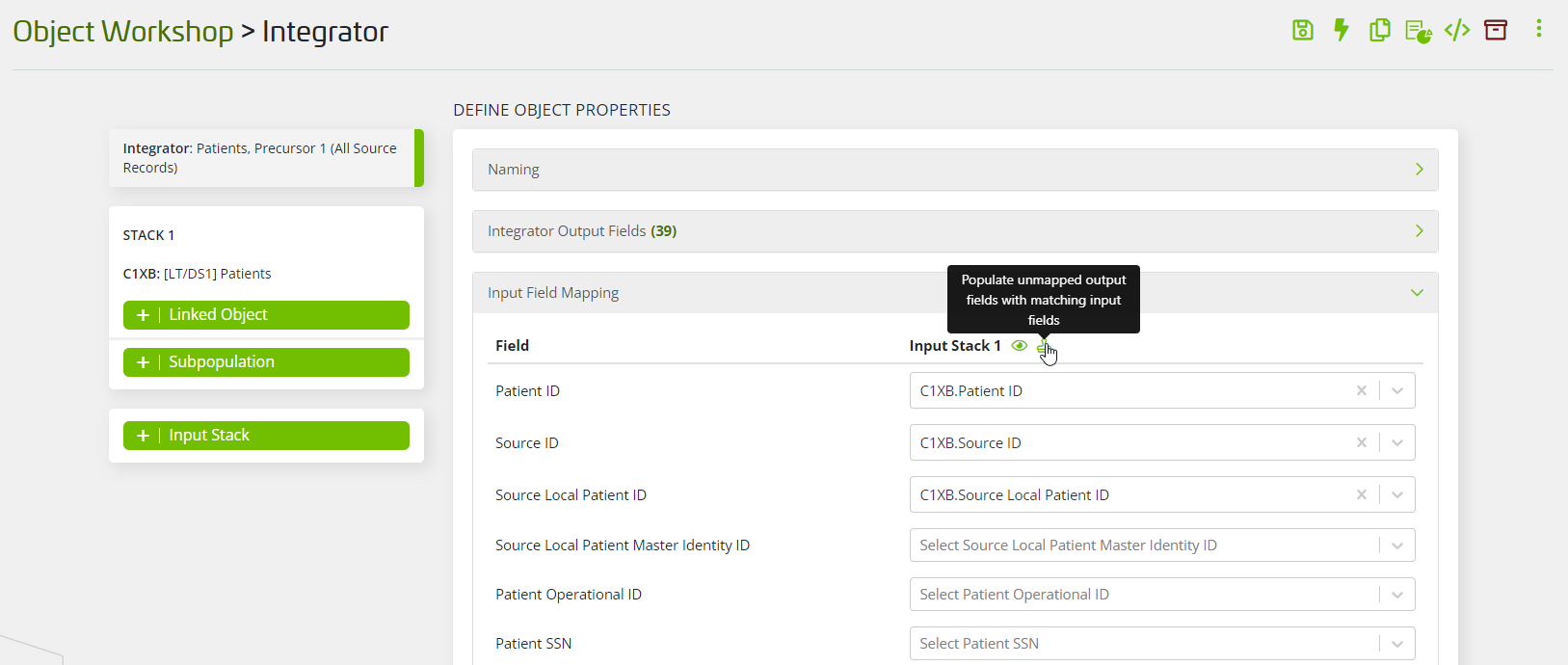Background and Strategy
To complete the integration, the Semantic Mapping or Local Transform objects generating the fully standardized form of the source data must be hooked up to the appropriate Natural objects.
If the earlier guidance has been followed, the grain size and field names of the source data should already match precisely to the expectations of the Natural Object Layer, making this task trivial.
Most Natural objects are set up with an upstream Dedicated Precursor object that acts as a staging ground for data records from all sources to be collected. For example, the Patients Natural object uses the Patients, Precusor 1 (All Source Records) object. The precursors are exclusively Integrator objects, which have some features that facilitate this collection process. Specifically, each precursor's Integrator Output Fields panel has been pre-configured to include all the fields needed by its terminal Natural object, and so all that remains is to add the appropriate upstream object -- typically a Local Transform object -- as a new Stack, then map the fields appropriately in the Input Field Mapping panel.
Detailed Implementation Guidance
- Instead of manually mapping each input field to the appropriate Integrator Output Field, use the Populate unmapped output fields with matching input fields icon (see screenshot below) to automatically map any matching fields. (If the relevant Semantic Mapping Templates were used earlier in the integration, the field names should be an exact match.)
